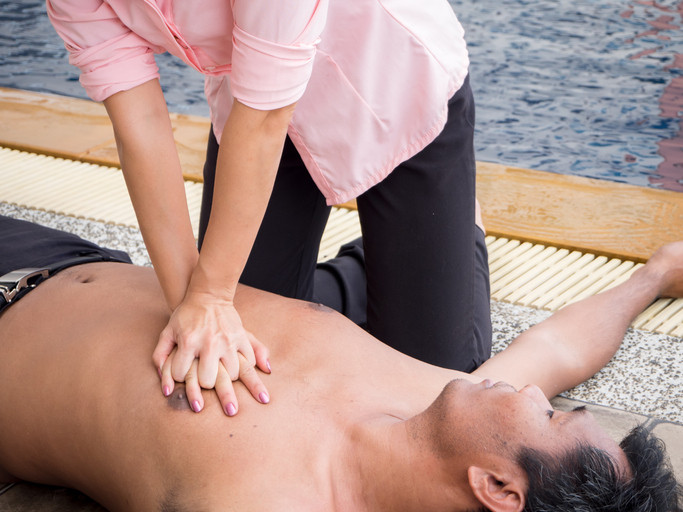Ready to learn CPR?
Recent events underscore the importance of knowing how to do lifesaving CPR.

The collapse on the football field of Buffalo Bills safety Damar Hamlin following a hard hit to his chest brought emergency responders running to do cardiopulmonary resuscitation (CPR) to help restart his heart, which had stopped beating.
When a heart stops beating (cardiac arrest), receiving even a simplified, hands-only version of CPR can at least double a person’s odds of surviving. Yet fewer than half of people who have cardiac arrest outside of a hospital receive CPR from someone nearby. And since four out of five cardiac arrests happen at home, the life you may save with CPR is more likely to be a loved one or someone you know than a stranger. Here are the CPR basics to know for adults.
Know two key features of cardiac arrest
How can you recognize whether a person is suffering cardiac arrest? Two key features are:
- Not responding. No reaction if you loudly say, “Are you okay?” and firmly shake a person’s shoulders.
- Not breathing normally. Check if their chest is rising and falling or put your face close to their nose and mouth to listen for the sounds of normal breathing. Labored, irregular breaths that sound like snorting or gasping aren’t normal breathing, and can’t provide the brain with adequate oxygen.
Know how to do hands-only CPR
- First, call 911 — or better still, tell someone nearby to make that call. Put the phone on speaker so you can start CPR and receive instructions from the emergency operator.
- Next, place the heel of one hand on the center of the person’s chest, right over the breastbone and between the nipples. Put the heel of your other hand directly on top. Lace the fingers of your top hand through the fingers of the bottom hand.
- Position your shoulders directly above your hands and push down, keeping your arms straight. Push hard: use your body weight to compress the chest at least two inches.
- Do the compressions repeatedly, aiming for a target of 100 to 120 pushes per minute.
Watch a video to help understand the steps
Knowing what to do in an emergency is invaluable. These one-minute hands-only CPR videos from the American Heart Association can help you learn the steps and the right speed for compressions.
CPR classes are offered through community education, hospitals, workplaces, and the American Heart Association. The hands-on practice of a CPR class can give you a better sense of the correct pressure and timing for compressions.
Worried about the time involved? Even a single, 20-minute training session — face-to-face or using virtual reality — offers skills and confidence, according to a 2022 JAMA Network Open study done in the Netherlands. When asked if they’d be willing to perform CPR on a stranger, just over 75% of young adults who had done the short training session six months earlier said yes.
